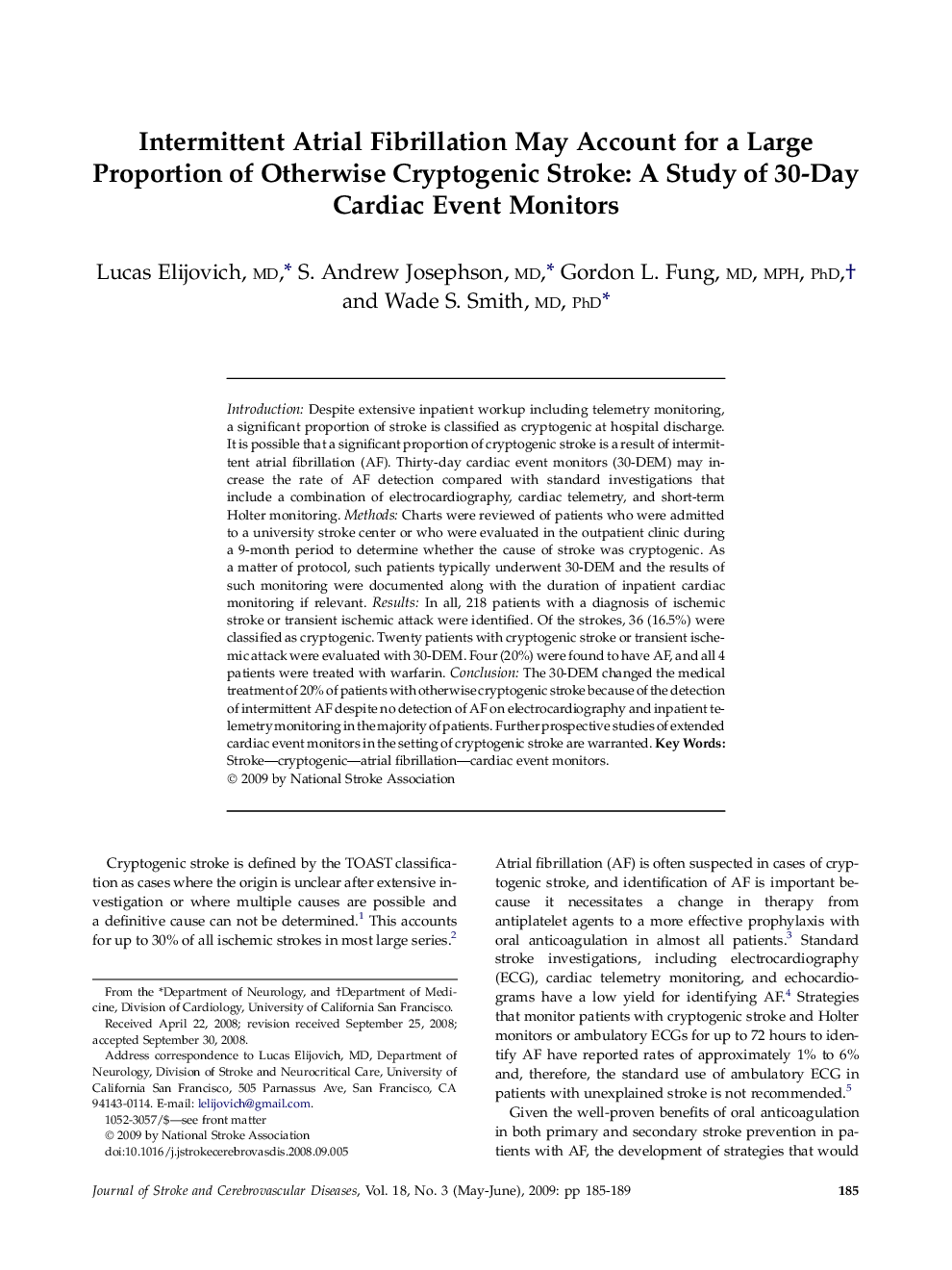| Article ID | Journal | Published Year | Pages | File Type |
|---|---|---|---|---|
| 2707475 | Journal of Stroke and Cerebrovascular Diseases | 2009 | 5 Pages |
IntroductionDespite extensive inpatient workup including telemetry monitoring, a significant proportion of stroke is classified as cryptogenic at hospital discharge. It is possible that a significant proportion of cryptogenic stroke is a result of intermittent atrial fibrillation (AF). Thirty-day cardiac event monitors (30-DEM) may increase the rate of AF detection compared with standard investigations that include a combination of electrocardiography, cardiac telemetry, and short-term Holter monitoring.MethodsCharts were reviewed of patients who were admitted to a university stroke center or who were evaluated in the outpatient clinic during a 9-month period to determine whether the cause of stroke was cryptogenic. As a matter of protocol, such patients typically underwent 30-DEM and the results of such monitoring were documented along with the duration of inpatient cardiac monitoring if relevant.ResultsIn all, 218 patients with a diagnosis of ischemic stroke or transient ischemic attack were identified. Of the strokes, 36 (16.5%) were classified as cryptogenic. Twenty patients with cryptogenic stroke or transient ischemic attack were evaluated with 30-DEM. Four (20%) were found to have AF, and all 4 patients were treated with warfarin.ConclusionThe 30-DEM changed the medical treatment of 20% of patients with otherwise cryptogenic stroke because of the detection of intermittent AF despite no detection of AF on electrocardiography and inpatient telemetry monitoring in the majority of patients. Further prospective studies of extended cardiac event monitors in the setting of cryptogenic stroke are warranted.
